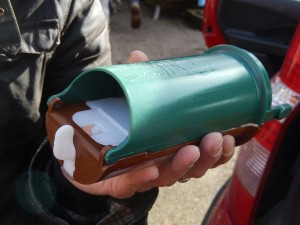
Today we began a week of intensive trapping. Huma wants to survey the small mammals now, before there is any risk of catching pregnant or nursing mothers. So we are going to put out and check traps every morning and evening.
The traps we’ll be using are a new design of tube trap. They are less fiddly than the old aluminium Longworth traps, and a lot cheaper too. Huma thinks they’re “volunteer proof”: we wonder. Being plastic, they are warm and comfortable for the mice, voles and shrews we hope to catch.
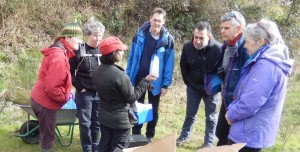
We learnt what to measure, and the distinguishing features of the species that we may see. Huma explained how we would set out the traps, in a grid of three rows of six traps (so, A1 .. A6, B1 .. B6, C1 .. C6), evenly spaced in the woods, with four more up in the trees (T1.. T4), five in the meadow (M1 .. M5), and five near water (W1 .. W5).

Each trap has two parts, so I painted its name onto each half.
We grouped the labelled traps into neat carrying trays.
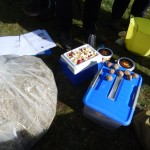
While I was painting, the others rolled chicken feed, peanut butter, seeds and water into bait balls.
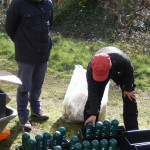
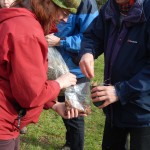
Then we put a handful of clean hay, a bit of apple, a bait ball, and a sprinkling of frozen maggots into the round end of each trap, armed the trap, locked the door open, and clicked the two halves together. The first two days and nights we don’t want to catch anything, but to accustom the mammals to visiting the traps.
We lined up in the wood, carefully set down the traps along natural edges, and marked their positions with hazard tape.
We have to visit them at 7am tomorrow morning…
